12 Tips on How to Manage Email Overload
Email overload is a common issue that leaves individuals feeling overwhelmed by emails, not only by those that are significant but also by a continuous influx of unwanted messages. Whether you're dealing with a lot of emails at work or simply have too many emails in your inbox, this guide will provide you with actionable steps to tackle the issue. Check our short video and continue to read further.

From prioritizing your emails to using specialized apps, we've got you covered.
1. Prioritize Your Emails
The first step to effectively manage email overload is to prioritize your emails. Most mail providers offer email management options for labels and folders to help you categorize your messages. For Outlook users, Flags are a useful tool, while Gmail users can utilize Stars. Additionally, Clean Email offers Smart Folders to automate this sorting process for you.
Using labels and folders in email providers
Labels and folders are the backbone of inbox organization. They help you categorize your emails so that you can quickly find what you're looking for, thereby reducing email overload.
Gmail labels:
- Open Gmail on the web and select the conversations or open messages you want to label.
- Click on the label icon at the top.
- Choose an existing label or create a new one.
Outlook folders:
- Open Outlook web app and select the emails you want to move.
- Select the Move to button or right-click on the selected emails, and then choose an existing folder or create a new one.
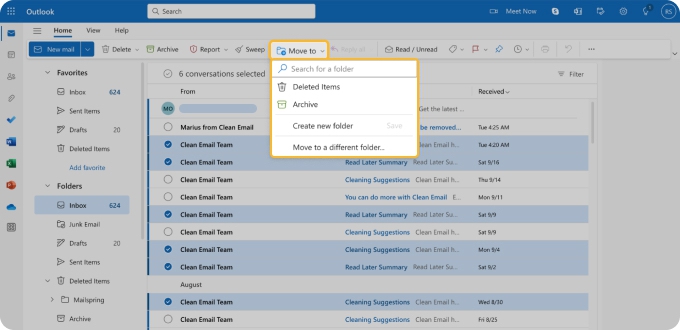
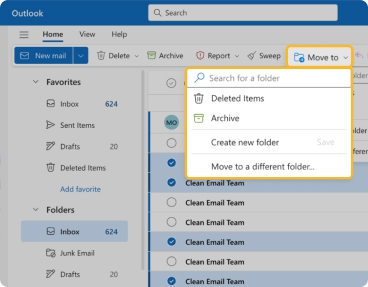
Folders in Yahoo Mail:
- Open Yahoo Mail on the web and select the emails you want to move.
- Click on the Move (folder icon).

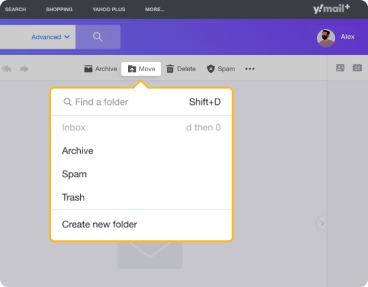
Smart Folders in Clean Email
Clean Email is a third-party application for managing email overload that takes inbox organization to the next level with its Smart Folders feature.
It automatically sorts your emails into categories like ‘Social Notifications,’ ‘Finance and Insurance,’ ‘Seasonal Sales,’ and many more, without actually moving the emails within your mailbox. Here's how to manage email clutter and make the most of this feature:
- Open Clean Email or download the app for iOS or Android, and connect your mail account.
- Navigate to the Smart Folders section.
- Choose a smart folder to preview its messages (e.g. ‘Productivity tools’).
- Apply Cleaning Suggestions (recommended actions that the app provides) or choose multiple messages for bulk actions like sending to Trash, making unread or starred, and more.
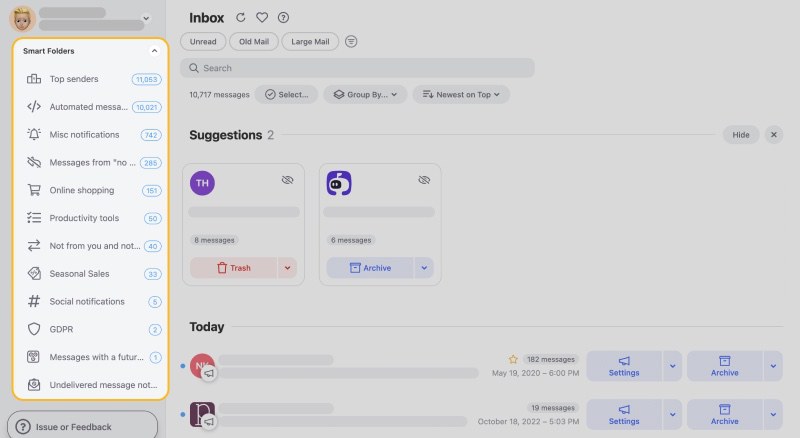
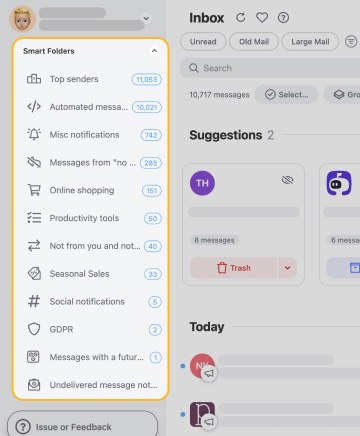

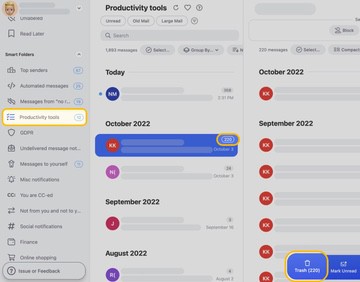
Using Flags in Outlook and Stars in Gmail
Flags and stars are quick ways to mark important emails that you'll need to revisit later, helping you manage how to stay on top of emails.
Flags in Outlook:
- Right-click on the message you want to flag.
- Select Flag from the context menu.
- Choose when you want to be reminded about this message.

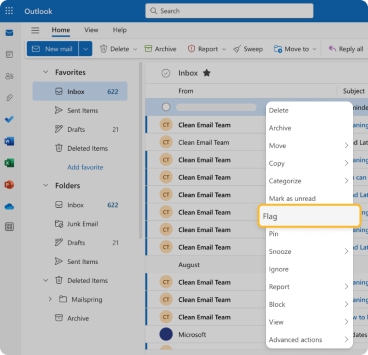
Stars in Gmail:
- Locate the message you want to star.
- Click the star icon next to the sender’s name.
- The message is now starred and will appear in your Starred folder for easy access.
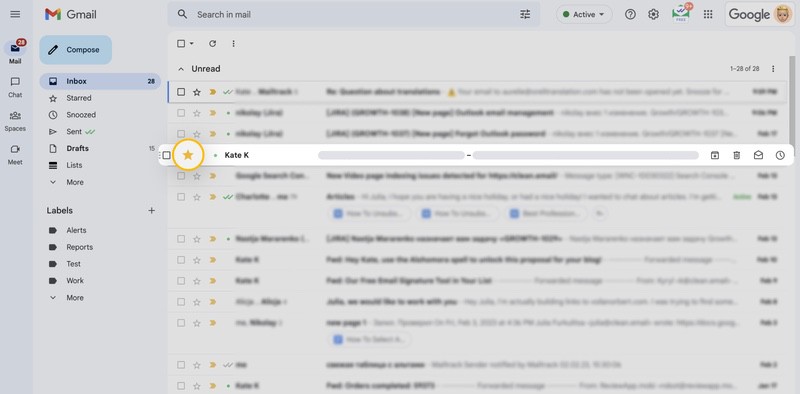
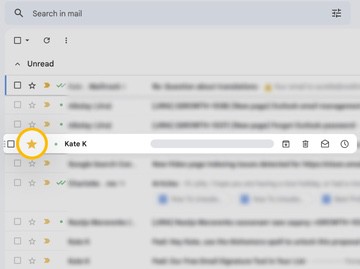
2. Use the Two-Minute Rule
If you're overwhelmed by cluttered inbox, consider implementing the Two-Minute Rule. This rule states that if an email takes less than two minutes to read and reply to, handle it immediately. Originating from time management methodologies, this simple practice can be a game-changer in managing inbox overload.
How to implement the Two-Minute Rule:
- Scan your inbox: Quickly check your inbox to identify emails that require less than two minutes to read and respond to.
- Take immediate action: For emails that meet the two-minute criteria, open them, read them, and respond. This could mean sending a quick reply, archiving the message, or even deleting it if it's not needed.
- Move on: Once you've dealt with the quick emails, you can focus on the more time-consuming ones later, knowing that you've already made progress in reducing your inbox clutter.
3. Set Up Automated Rules and Filters
Automated rules and filters are essential for email filtering, especially when you're dealing with too much email clutter. They automatically sort your incoming messages, helping you get more productive and manage email overload more easily.
Auto Clean in Clean Email
Clean Email's Auto Clean tool elevates email filtering by creating highly customizable rules that are not only easy to manage but also can be paused and resumed at any time, offering enhanced user flexibility.
- Open Clean Email and connect your mail account.
- Navigate to the Auto Clean section.
- Create cleaning rules based on sender, subject, or other criteria.
- Choose the action, such as Move to, Trash, Archive, Mark Read, and more, to be applied. Then, click Create Rule.

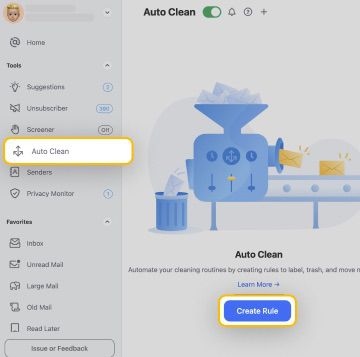
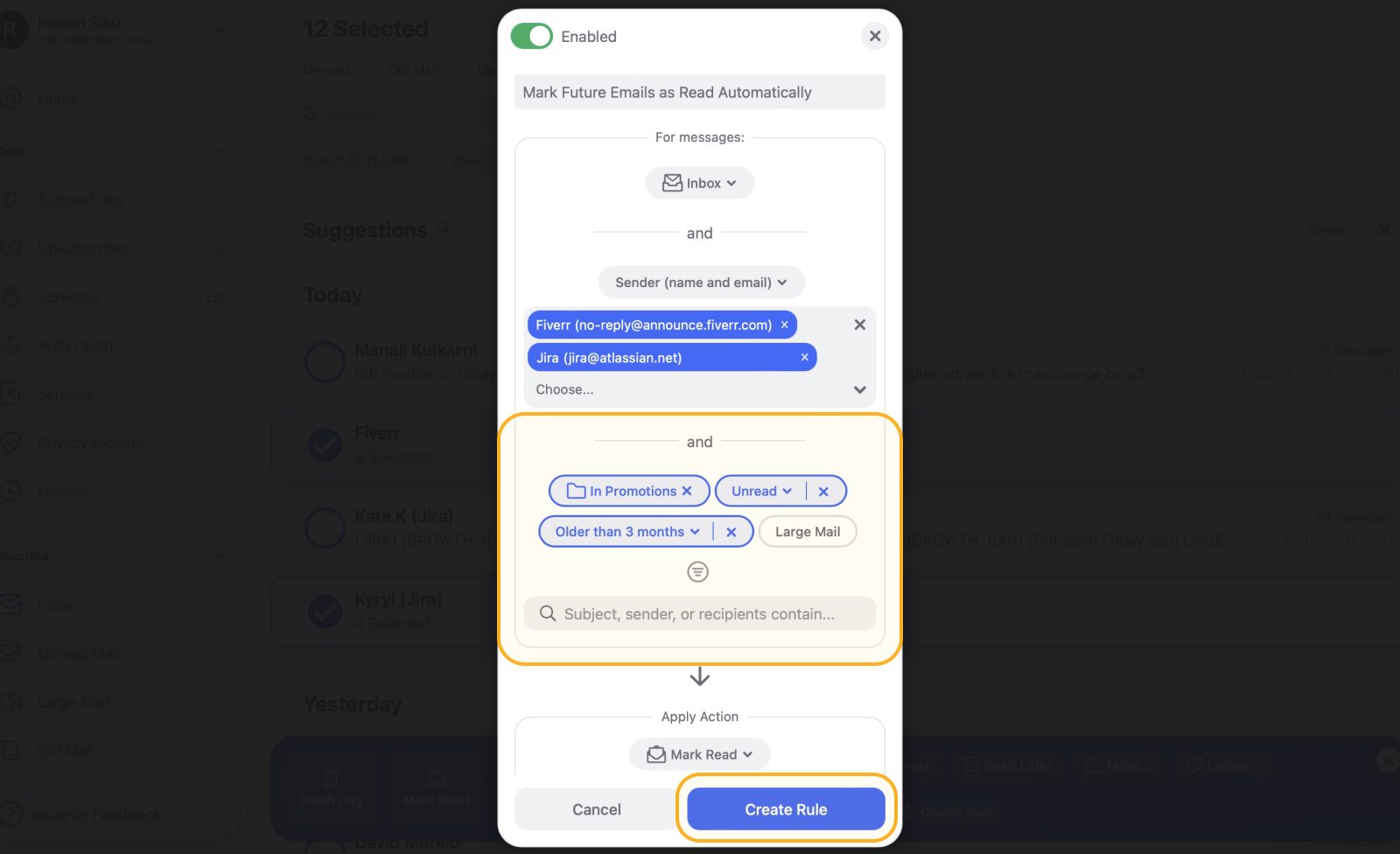
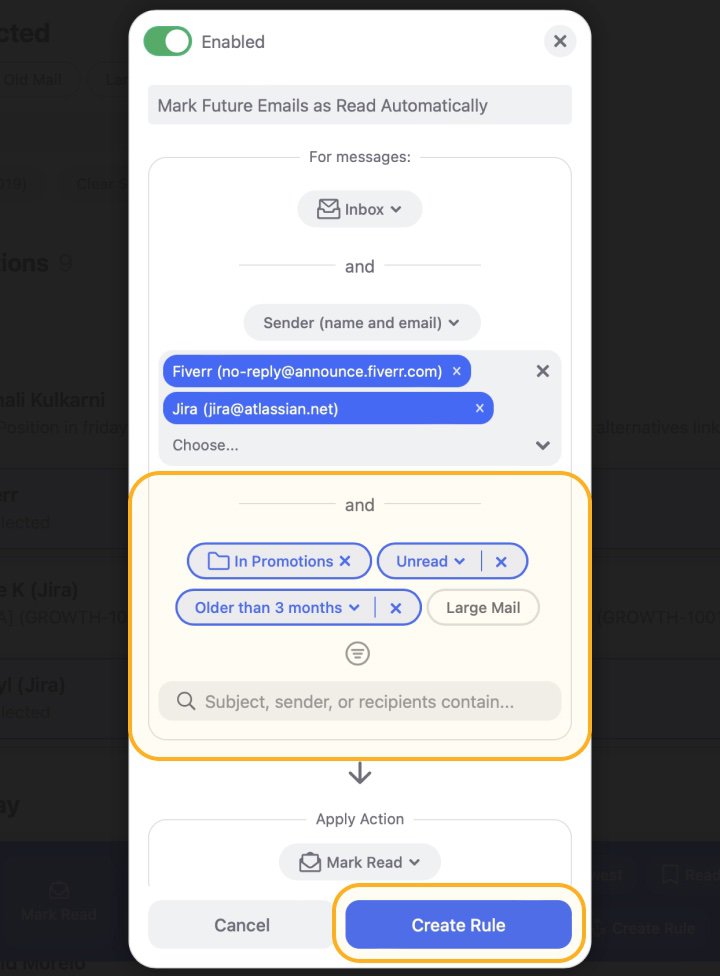
In the Auto Clean dashboard, you have the ability to review and, later, adjust the existing rules according to your preferences.
Rules and Filters in Gmail, Outlook, Yahoo
Filter emails easily with built-in options from Gmail, Outlook, and Yahoo, helping you stay on top of emails.
- Open Gmail on the web and click the Settings gear icon, choose See all settings.
- Navigate to the Filters and Blocked Addresses tab.
- Click on Create a new filter and set your criteria.
- You can also create filters straight from the Show search options button on the right side of the search box.

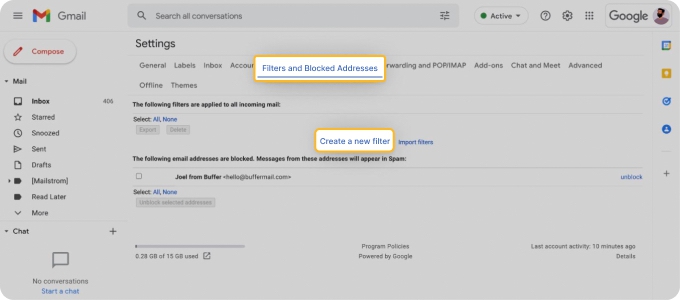
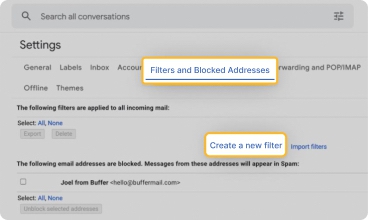

Outlook rules (for web users):
- Right-click on a message and choose Advanced actions followed by Create rule.
- Click More options to access the advanced Rules Settings.
- Specify your preferences for the selected sender, add conditions and actions, and then click Save.
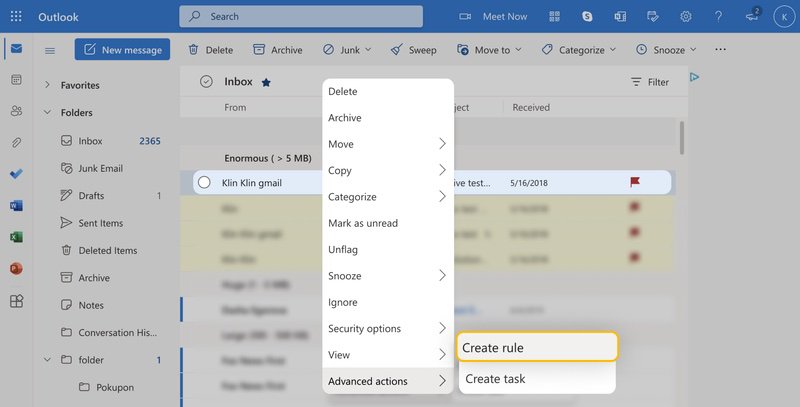


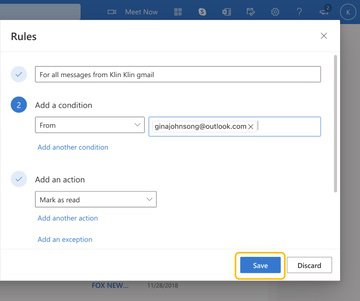
- Log in to your Yahoo Mail account on the web.
- Click the Settings gear icon located in the top-right corner and choose More Settings.
- Choose Filters from the left-side menu and click + Add new filters.
- Enter the filter name, set the filter rules, and select or create a folder for the emails.
- Finish by clicking Save at the bottom.

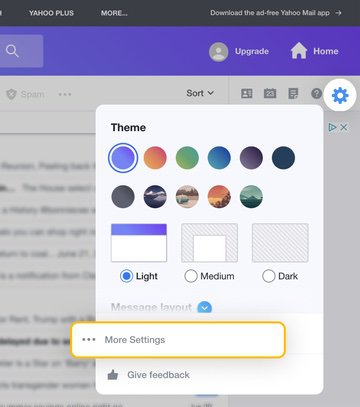

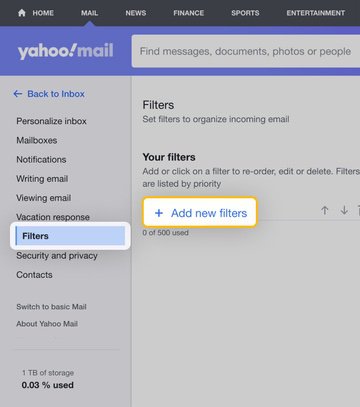
4. Unsubscribe Efficiently
If you're receiving a lot of unwanted newsletters, one of the most effective ways to reduce that number is to unsubscribe from emails or mailing lists that no longer serve you. Manually unsubscribing can be tedious, as you have to find each "Unsubscribe" button, which is sometimes hidden by dishonest senders.
Clean Email offers a one-click Unsubscriber tool to make this process more efficient by gathering all the unsubscribe options in one place. It takes care of sending unsubscribe requests by following the links in message headers and automatically filling out any required forms on your behalf.
How the Unsubscriber tool works
- Sign in to Clean Email with your email address.
- Navigate to the Unsubscriber section, here you'll see a list of all your subscriptions.
- Select the ones you want to unsubscribe from.
- Click the Unsubscribe button on the blue action bar at the bottom.

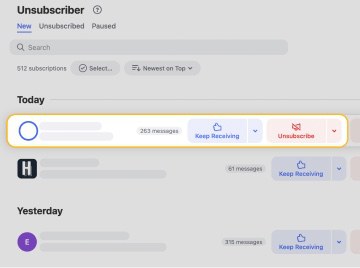
Alternatively, you can choose to pause subscriptions, reroute them to a Read Later folder, or opt for Keep Newest to maintain only the latest message from the sender while discarding preceding ones, among other options.
Useful tips:
- Review regularly: Make it a habit to review your subscriptions at least once a month. This ensures that you're only receiving emails that add value to your life.
- Be selective: Before subscribing to a new newsletter or mailing list, consider if it will genuinely be beneficial. This proactive approach can prevent emails from accumulating in the first place.
5. Implement the 4 D’s
When you're overwhelmed by email, making quick decisions is crucial. The 4 D's of time management—Do it, Delegate it, Defer it, or Delete it—provide a simple framework to help you manage email overload successfully.
How to implement the 4 D's:
- Do it: If an email requires immediate action and can be done quickly, handle it right away.
- Delegate it: If the message requires action but not by you, forward it to the appropriate person.
- Defer it: If the email requires more time, flag it or move it to a "To-Do" folder for later action.
- Delete it: If the message is not important or relevant, delete it immediately to reduce clutter.
6. Use an email management app
For those still struggling with so many emails, using an email management tool can be a game-changer. Clean Email and SaneBox offer unique features that can help you manage email overload more effectively.
Cleaning Suggestions by Clean Email
The Cleaning Suggestions feature provides personalized recommendations, based on your actions and those of other app users, to help you declutter your inbox.
- Open Clean Email and connect your mailbox.
- Navigate to the Cleaning Suggestions section.
- Review the suggestions, which may include archiving old emails, marking them as read, moving them to Trash, adding labels, and more.
- Select the actions you'd like to apply and confirm.
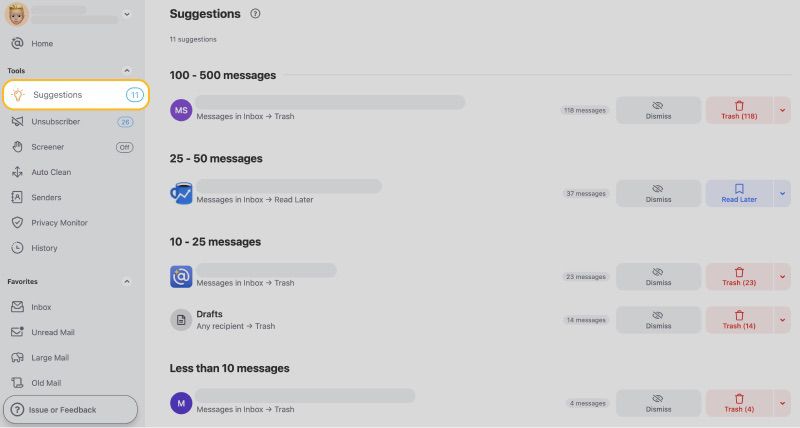

AI email sorting by SaneBox
SaneBox, an intelligent email management service, provides a strategic approach to manage too many emails by categorizing incoming messages into various folders or labels, thereby sorting them by different levels of importance. This AI email sorter employs several default folders, including SaneLater, SaneNews, SaneBlackHole, SaneNoReplies, SaneTomorrow, and more, to efficiently manage email overload.
- Sign up for a SaneBox with your email address.
- SaneBox will create custom labels like SaneLater and SaneBlackHole in your mail service provider.
- The AI will start sorting your incoming emails based on your past interactions.
- Review these folders periodically and adjust any settings as needed.
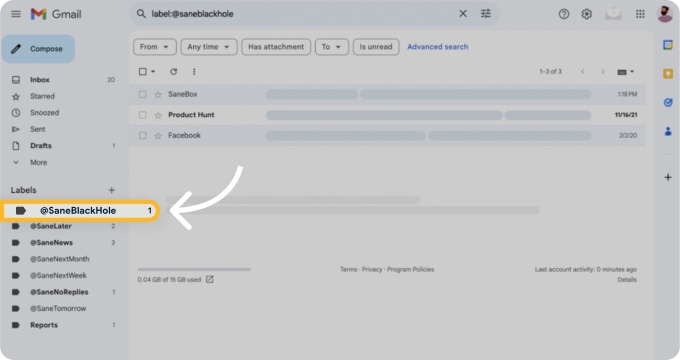
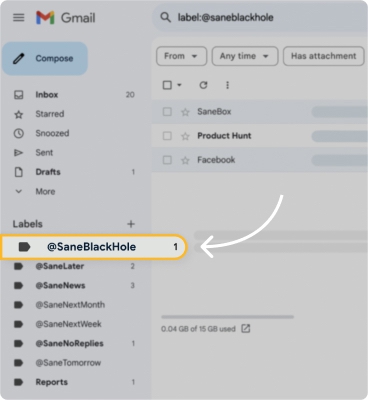


Quick tips:
- Regularly check Suggestions: For Clean Email, make it a habit to check Cleaning Suggestions on a regular basis to keep your inbox optimized.
- Train SaneBox: The more you use SaneBox, the smarter it gets. Make sure to move incorrectly sorted emails to the right folders to improve the tool’s accuracy.
7. Manage Email Spam
Managing email overload also involves dealing with spam. While most email providers have built-in spam filters, Clean Email adds an extra layer of protection with its Screener feature.
How to Use Clean Email's Screener
The Screener tool helps you quarantine and manage unwanted emails efficiently, offering a robust solution to inbox overload.
- Open Clean Email and connect your mailbox.
- Navigate to the Screener section.
- By default, Screener is turned off. To activate it, click the toggle switch located at the top left, or simply click the Enable Screener button.
- Click the toggle switch labeled I understand to enable the tool, and then click Continue.
- Review and select the desired settings, then click Enable Screener to activate the feature.
- For each quarantined sender, you can choose to either Allow their messages or Block them.
- Additionally, you can Unsubscribe or direct these emails to a specific folder right from the Screener interface.
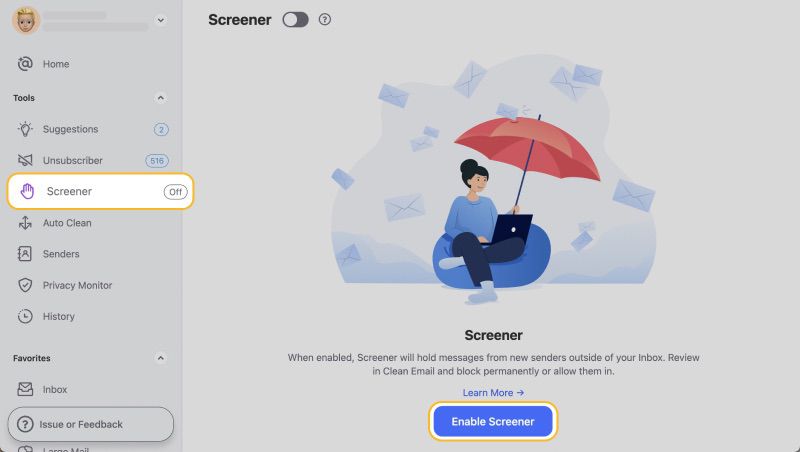
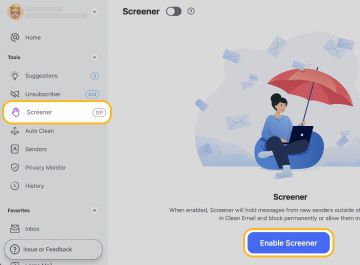
From now on, all emails from new senders will be quarantined before reaching your inbox. You can access them by opening the Screener tool.

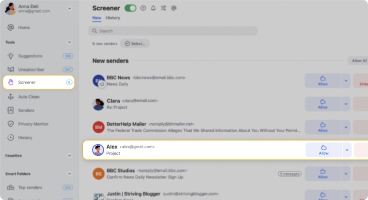
Quick tips:
- Regularly update screener choices: Your mail interactions change over time, so make sure to update your Screener settings accordingly.
- Review quarantined emails: Periodically check the emails that have been moved to spam to ensure no important emails are being incorrectly filtered.
8. Batch Process Emails to Manage Email Overload
If you're dealing with a lot of mail at work, it's beneficial to designate specific times of the day to manage email rather than checking constantly. This approach, known as batch processing, can help you focus on more important tasks.
Quick tips:
- Set timers: Use a timer to allocate specific periods for inbox management.
- Disable notifications: Turn off notifications during non-email periods to avoid distractions.
9. Block unwelcome senders
When unsubscribing doesn't help, and you still receive too many letters, consider blocking the sender or the domain to prevent future messages.
How to block senders
- Gmail: Open the message, click the three-dot menu, and select Block “[sender's name]”.

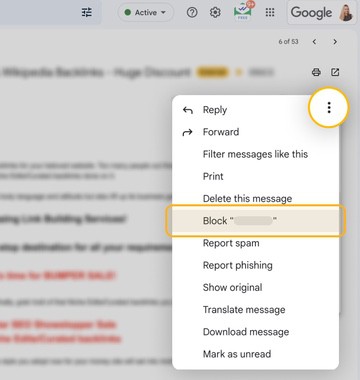
- Outlook: Right-click the email, hover over Block, and then click Block sender.
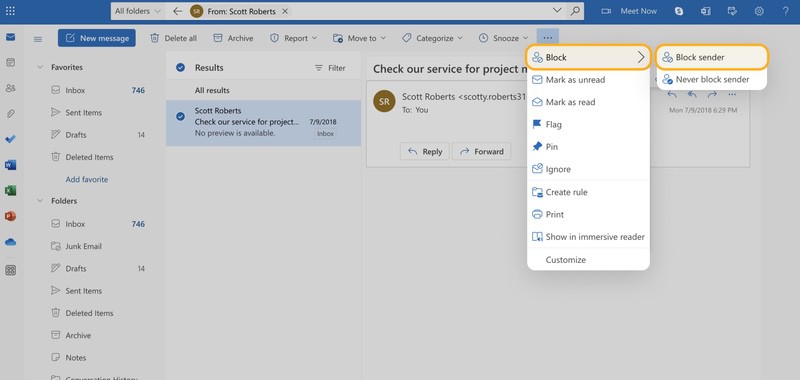
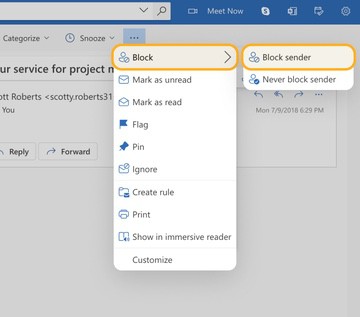
- Yahoo Mail: Right-click the message and choose Block Senders.
Blocking unwelcome senders is a straightforward way to manage email overload and keep your inbox clutter-free.
10. Use disposable addresses
To avoid too many emails from marketing campaigns, consider using disposable mail addresses for registrations or sign-ups.
How to choose a disposable address
- Purpose: Determine the purpose of the disposable address. Is it for a one-time registration, or do you plan to use it multiple times for similar services?
- Validity: Choose a provider that offers the validity period you need—some offer as little as 10 minutes, while others might offer a few days.
- Privacy: Opt for a provider that doesn't require personal information for sign-up.
Examples of disposable email providers
- 10MinuteMail: Provides a disposable mail address that expires after 10 minutes.
- Temp Mail: Offers a temporary, anonymous email address that you can use to receive emails. The inbox is deleted when you close the browser.
- Guerrilla Mail: Offers disposable addresses with the option to extend their life for another hour.
You can either use disposable email services, which can help protect your privacy from ad servers and other sources of marketing emails or create alias addresses with certain mail providers. For instance, Yahoo allows you to generate temporary addresses that are forwarded to your main account, simplifying the process of filtering out marketing emails.
11. Turn Off Notifications
To minimize distractions and manage inbox clutter, it's beneficial to turn off email notifications.
How to turn off notifications
Gmail:
- Open Gmail on the web and click on the gear icon to go to Settings → See all settings.
- In the General tab scroll down to the Desktop notifications section.
- Select Mail notifications off and save changes.
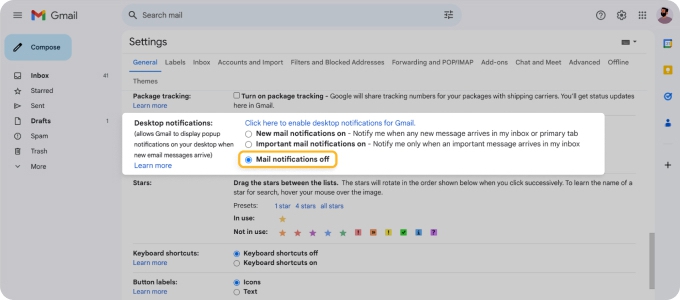
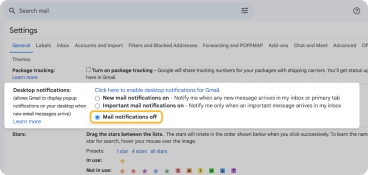
Outlook:
- Open the Outlook desktop app for Windows and go to File → Options.
- In the Mail tab, scroll down to the Message arrival section.
- Uncheck the boxes for the types of notifications you want to disable.
Yahoo Mail:
- Open Yahoo Mail on the web and click on the gear icon to go to Settings.
- Click on More Settings and then Notifications.
- Toggle off the Desktop notifications.


Quick tips:
- Use ‘Do Not Disturb’ mode: Use your email client's Do Not Disturb feature during focused work periods.
- Customize notifications: If turning off all notifications isn't feasible, customize them to only alert you for high-priority emails.
Important note: Turning off notifications won't reduce the number of emails you receive. To effectively manage email overload, it's advisable to unsubscribe from unwanted mailings and regularly clean your mailbox using tools like Clean Email.
12. Review and Adapt
Regularly reviewing and adapting your email management practices is essential for successfully managing email overload. Here's how to make this review process more practical.
Steps for a practical review
- Audit your inbox: Take a snapshot of your current inbox. How many unread emails do you have? How many folders or labels are in use?
- Identify pain points: Are you spending too much time sorting emails? Are important emails getting lost in the clutter?
- Evaluate current strategies: Assess the effectiveness of your current inbox management methods. Are filters, rules, and folders doing their job?
- Consult analytics: If you're using an email management app like Clean Email, review any available analytics (like Action History Summary) to understand your mailing habits better.
- Set new goals: Based on your review, set achievable goals for the next month. This could be reducing unread emails by 50% or setting up new filters.
Quick tips:
- Schedule regular reviews: Put a recurring event in your calendar to remind you to review your tactics to manage email overload.
- Test new methods: Don't be afraid to experiment with new emails manager apps or methods. The more you try, the better you'll understand what works for you.
- Use simple tactics: If you’re constantly feeling stuck, losing focus, or need a refresher, try the ADHD email management strategies proven by experts.
Conclusion
Email overload is a challenge, but it's not insurmountable. With these practical tips, you can learn how to manage email overload and regain control of your inbox. Whether you're overwhelmed by the incoming mail or simply have too many emails at work, there's a solution for you.


